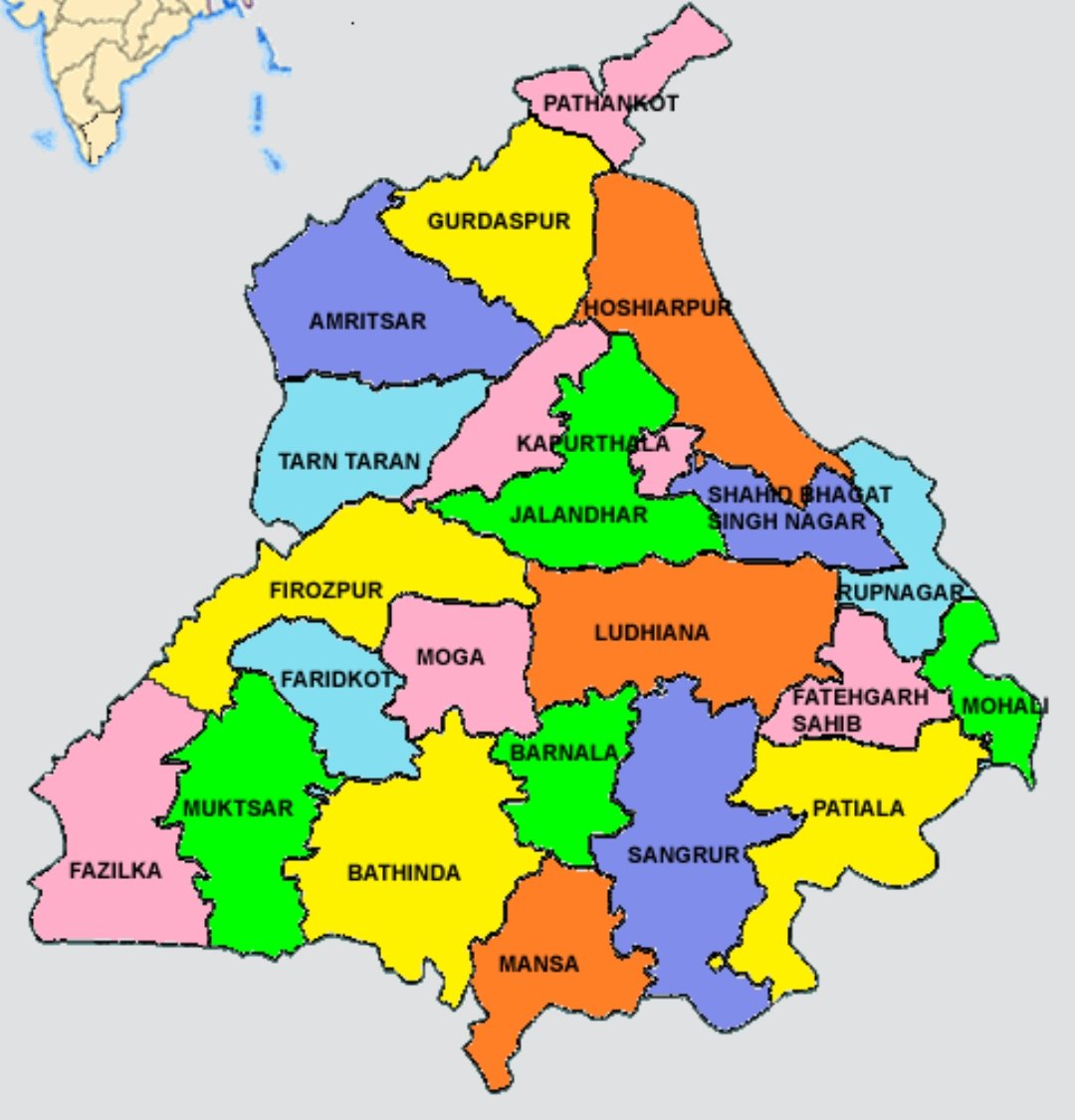Punjab is the breadbasket of India. There are 18 and a half lac farming families. The #FarmersProtest are resonating across the world. In this thread, I would explain some lesser known facts which would help in understanding how difficult it is for a farmer to survive in India.
The Indian state of Punjab being the country’s main granary contributes 40% wheat and 30% rice to the central pool. The average income of a farming family in Punjab is Rs 3500 per month as per the 2016 Economic Survey Report. In the earlier days of Green Revolution in 1971,
[1]
[1]
the Minimum Support Price (MSP) of wheat was Rs 76 per quintal and the paddy price was Rs 21 per quintal. In 2015, the MSP on wheat was Rs 1450 per quintal - 19 times the price in 1971. The MSP on paddy was Rs 1400 - sixty-seven times the price. While in the same period...
[2]
[2]
..the basic salary plus dearness allowance of govt employees had gone up 120-150 times, of college teachers 150-170 times, of school teachers 280-320 times, of corporate employees of the general manager rank 300 times, of a vice president and above 1000 times.
[3]
[3]
If an income parity is created between farming and other trade, the wheat price should be Rs 7600 per quintal and paddy should be Rs 5100 per quintal. But the MSP for wheat in 2015 was Rs 1450 and average income of a farmer's family is mere Rs 3500.
[4]
[4]
There are around 18 and a half lac farming families in Punjab and around 65% of them are small farmers. The division of lands through inheritance laws is making the farmers more marginal and at the cost of institutionalisation of the Theka.
[5]
[5]
Since 1965 when the State Agriculture Marketing Act and Mandi Board came into existence, Punjab has developed a network of 1850 plus procurement centres - grain markers or mandis - but put together they do not manage to cover the farm produce supply chain.
[6]
[6]
This systematic apathy points to how the Centre treats Punjab.
Neither in 2007’s central rehabilitation package of over 15000 crores for southern states nor in the special package to Vidarbha or in the dry land package for water deficient areas did Punjab receive any aid.
[7]
Neither in 2007’s central rehabilitation package of over 15000 crores for southern states nor in the special package to Vidarbha or in the dry land package for water deficient areas did Punjab receive any aid.
[7]
In 2008, out of sanctioned Rs. 71000 crores to finance the national agricultural debt waiver, Punjab received only 608 crores. In the whitefly protest against a demand of Rs 4300 crores, the Punjab govt offered a paltry 600 crores for farmers and 64 crores for labourers.
[8]
[8]
The imbalance is not just restricted to money or land but even Punjab's water has been stolen. The control of rivers has always been the prerogative of the state as per the Indian constitution but Punjab is the only state whose rivers are controlled by federal government.
[9]
[9]
After the Punjab Reorganisation Act, 1966, East Panjab was divided into two new states; Haryana and Himachal Pradesh. Over 75% of Punjab’s river water was diverted to non-riparian states of Haryana and Rajasthan through the Gandhi Canal and SYL Canal respectively.
[10]
[10]
Before 1966, Punjab which included Haryana had riparian rights over Ravi, Beas, Satluj and Jamuna. But after the 1966 act, Haryana gets waters from Jamuna but also from the three rivers of Punjab despite of the fact that it is non riparian to the three rivers of Punjab...
[11]
[11]
whereas Punjab does not get any water from Jamuna, because it is non riparian to that river. Lieutenant General Harwant Singh wrote a couple of years back, “If the present distribution of waters is accepted, then 9 lakh acres of land in Punjab will become barren and...
[12]
[12]
1.5 million families rendered destitute. The water table in Punjab has been falling at an alarming rate and if this depletion of ground water is to continue due to lack of availability of waters of its own rivers, then the better part of Punjab will turn into desert”
[13]
[13]
Like I wrote before, Punjab contributes 40% wheat and 30% rice to the central pool. But it is important to consider at what cost. In 1960s, from three lac hectares, the area under rice for the central pool has gone up to 28 lac hectares but not the local consumption.
[14]
[14]
In arid Punjab, paddy is cultivated using double the amount of water it needs in Bihar and Bengal. Paddy, indeed fetches a high price but takes a toll on the land and water aquifers. Farmers would prefer to stop paddy cultivation but sadly there's no alternative for them.
[15]
[15]
In his regard, a panel report tabled in Parliament is quite insightful which proclaims that instead of an ideal Nitrogen, Phosphorus and Potassium combination of 4:2:1, ratio in Punjab is 39:9:1 thus indicating how the fertile lands of Punjab are saturated with chemicals.
[16]
[16]
Now the three market friendly laws of BJP govt would allow farmers to sell their products directly to private companies without the 7000 govt regulated Mandis which acted as a middlemen but the problem is that 85% of country's poor farmers own less than 2 acres.
[17]
[17]
68% of them own less than 1 hectare of land thanks to Nehru's land reforms. More than half of farmers don't even have enough to sell. The average annual income of a farming family in more than half of India's states is 20,000 rupees. How would they deal with private buyers?
END
END
The reference for majority of the facts is from Amandeep Sandhu's excellent book “Panjab: Journeys Through Fault Lines”

 Read on Twitter
Read on Twitter


